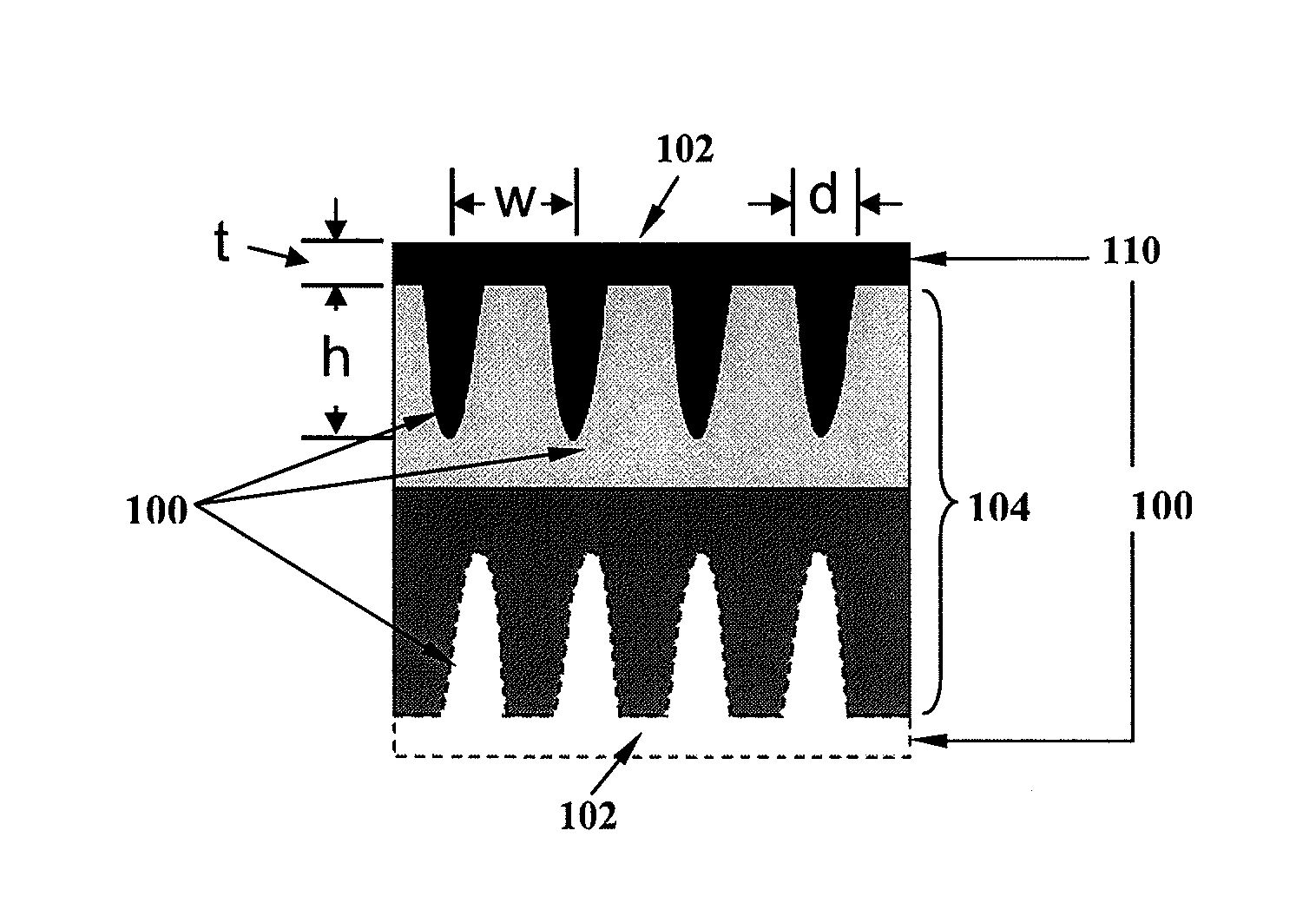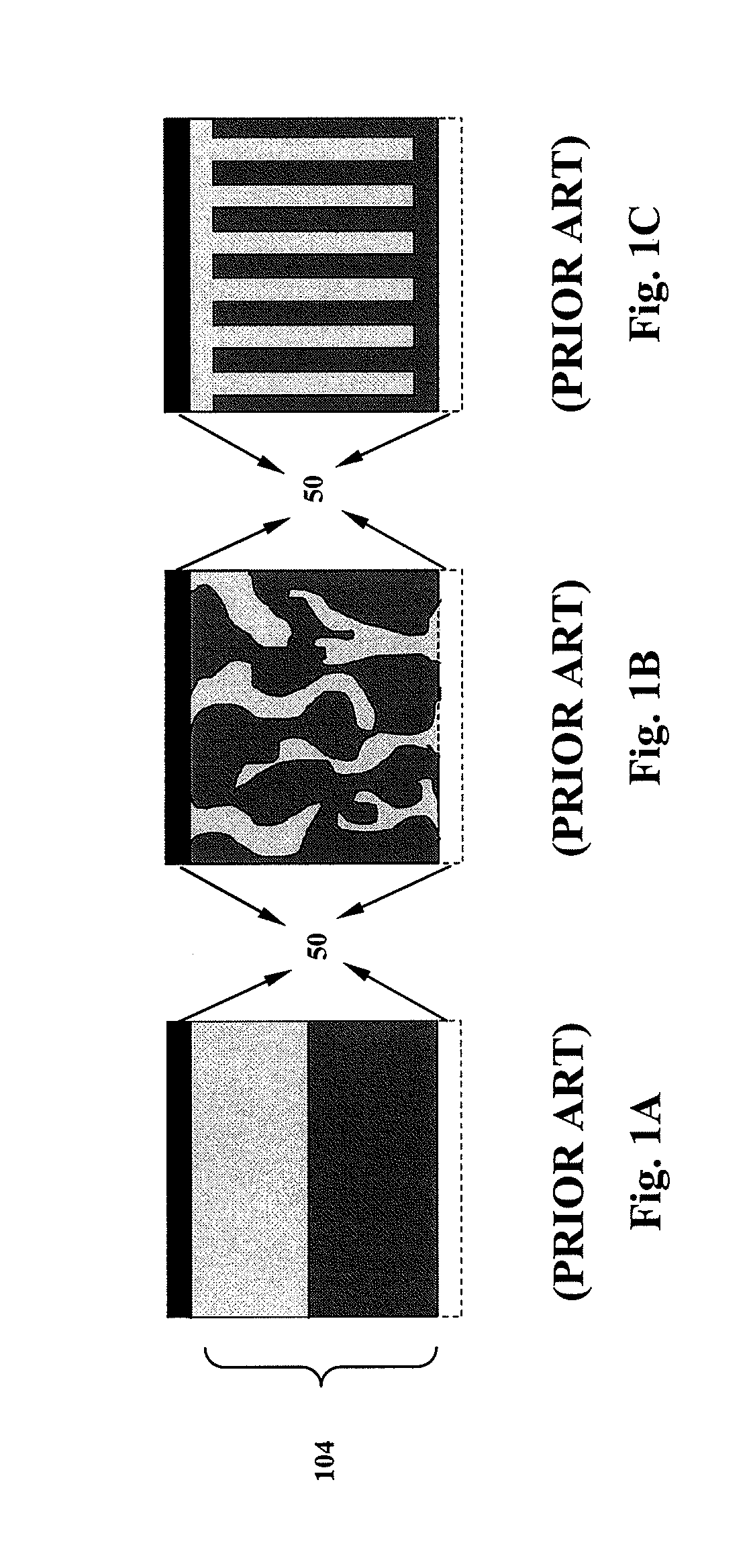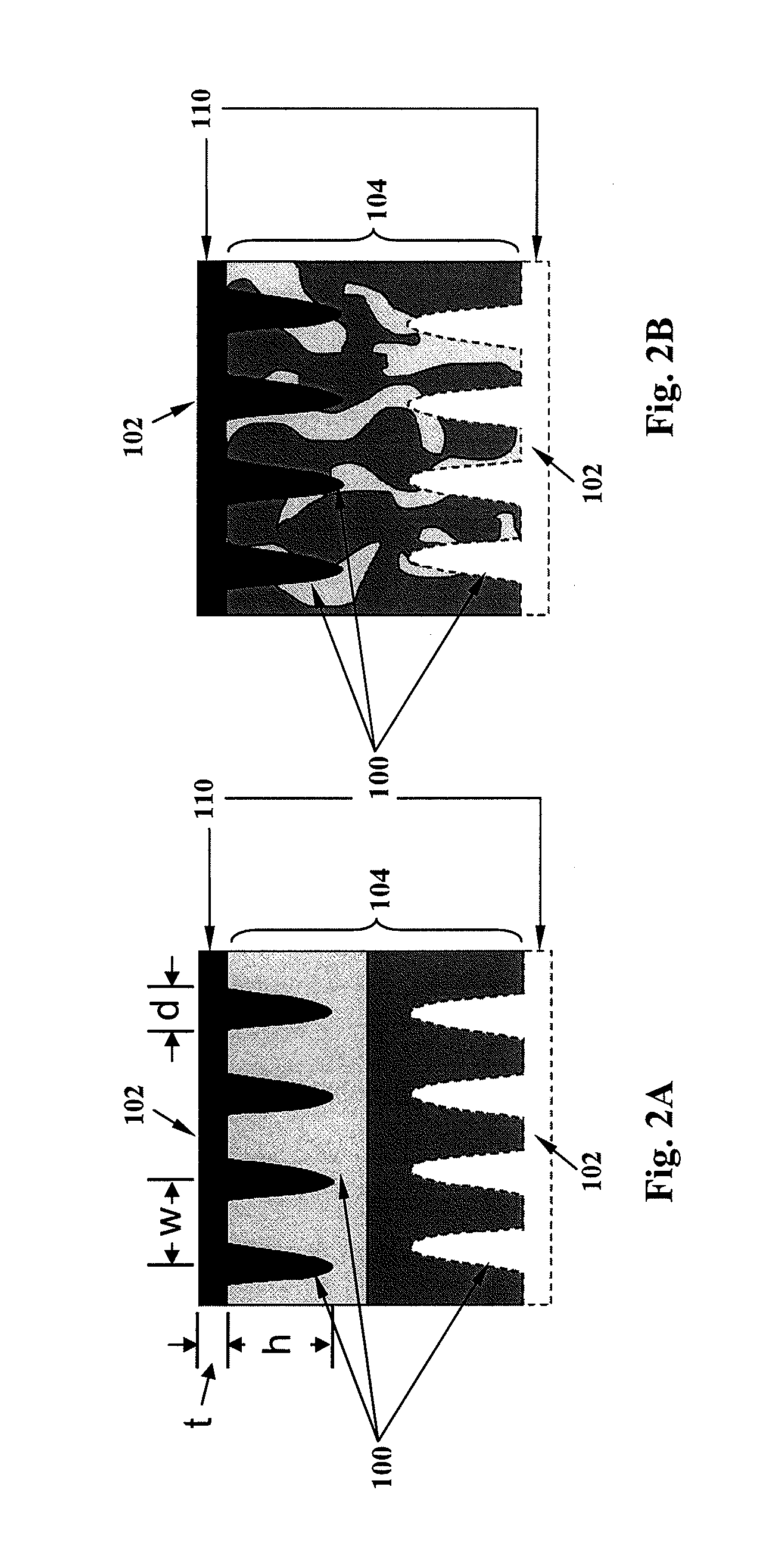Structured pillar electrodes
a technology of pillar electrodes and electrodes, applied in the field of structured electrodes, can solve the problems of uncompetitive si-based pv power production with conventional fossil fuel-based energy sources, complex and expensive fabrication processes, and low material and manufacturing costs, and achieve the effect of higher power conversion efficiency gains
- Summary
- Abstract
- Description
- Claims
- Application Information
AI Technical Summary
Benefits of technology
Problems solved by technology
Method used
Image
Examples
Embodiment Construction
[0028]The above and other objectives of the invention will become more apparent from the following description and illustrative embodiments which are described in detail with reference to the accompanying drawings. Similar elements in each Figure are designated by like reference numbers and, hence, subsequent detailed descriptions thereof may be omitted for brevity. In the interest of clarity, in describing the embodiments of the present invention, the following terms and acronyms are defined as provided below.
Acronyms
[0029]CVD: Chemical Vapor Deposition[0030]ITO: Indium Tin Oxide[0031]LED: Light Emitting Diode[0032]FTO: Fluorinated Tin Oxide[0033]MBE: Molecular Beam Epitaxy[0034]PEDOT:PSS: poly(3,4-ethylenedioxythiophen:poly(styrene sulfanate))[0035]PCE: Power Conversion Efficiency[0036]PV: Photovoltaic[0037]PVD: Physical Vapor Deposition[0038]RIE: Reactive Ion Etching
Definitions
[0039]Acceptor: A dopant atom which, when added to an inorganic semiconductor, can form p-type regions...
PUM
| Property | Measurement | Unit |
|---|---|---|
| Fraction | aaaaa | aaaaa |
| Pore size | aaaaa | aaaaa |
| Pore size | aaaaa | aaaaa |
Abstract
Description
Claims
Application Information
 Login to View More
Login to View More - R&D
- Intellectual Property
- Life Sciences
- Materials
- Tech Scout
- Unparalleled Data Quality
- Higher Quality Content
- 60% Fewer Hallucinations
Browse by: Latest US Patents, China's latest patents, Technical Efficacy Thesaurus, Application Domain, Technology Topic, Popular Technical Reports.
© 2025 PatSnap. All rights reserved.Legal|Privacy policy|Modern Slavery Act Transparency Statement|Sitemap|About US| Contact US: help@patsnap.com



